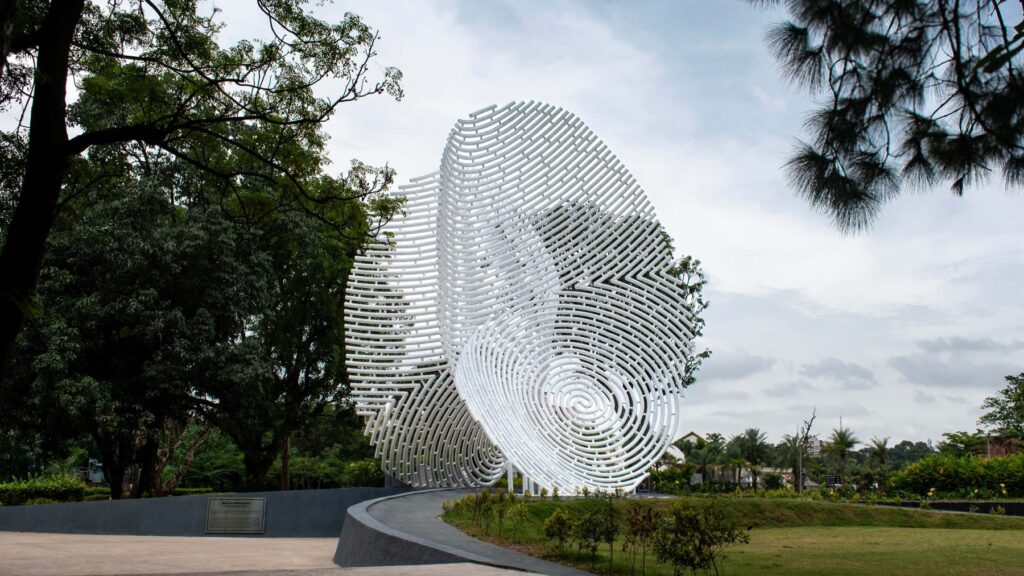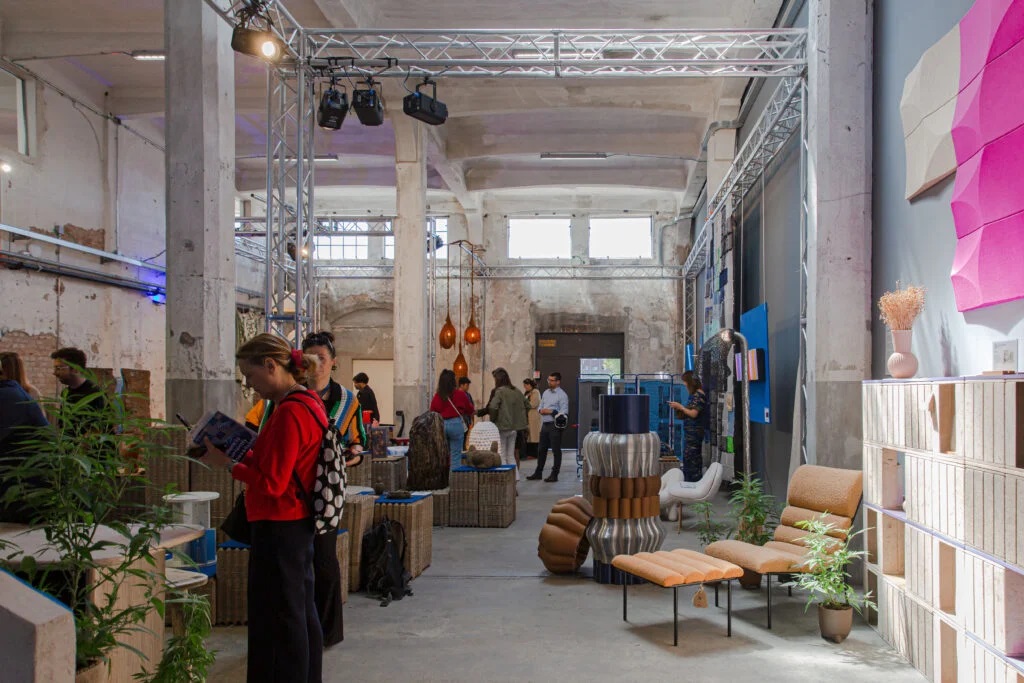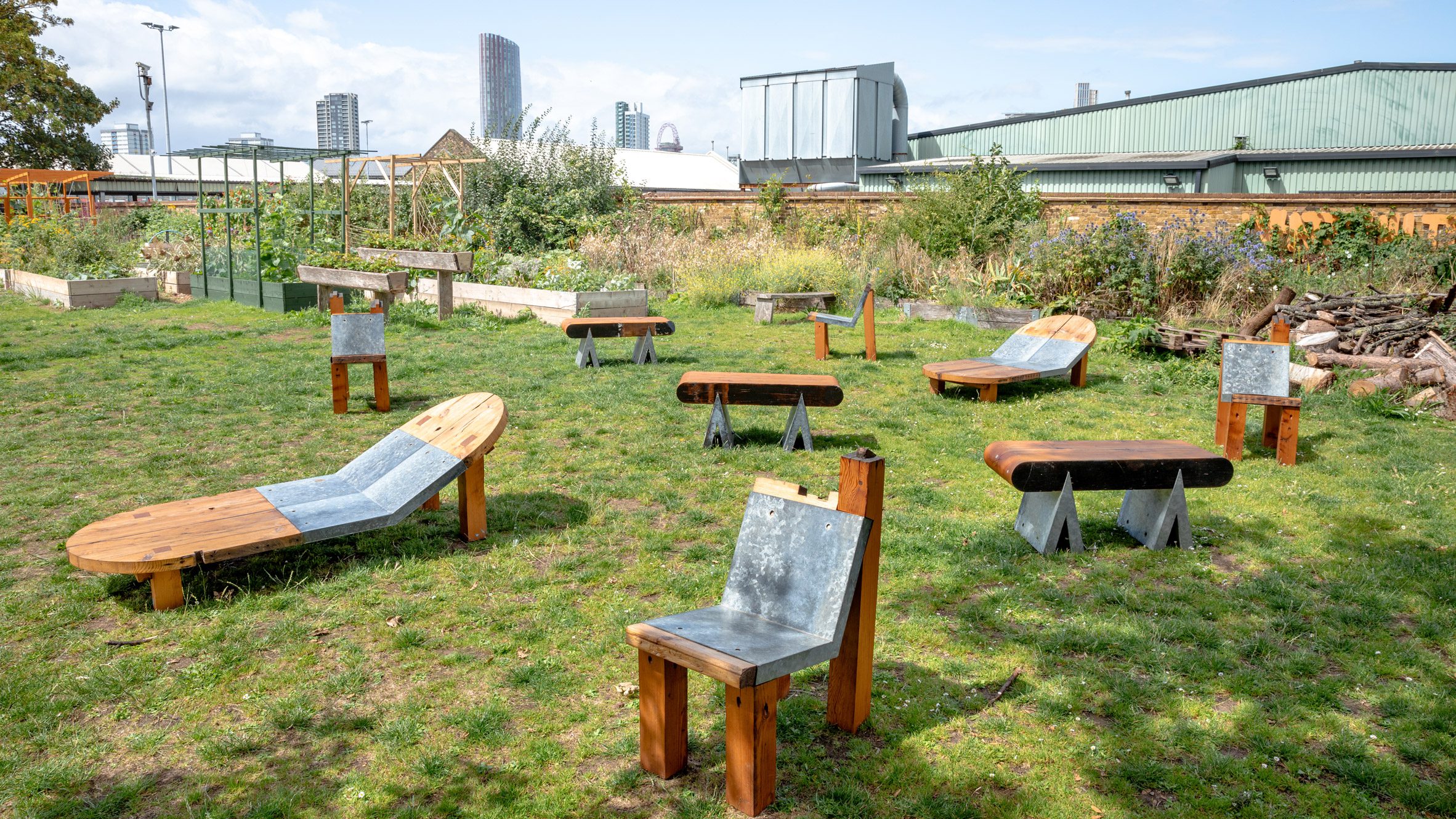
Regenerating cities: new visions for street furniture and outdoor installations
The combination of aesthetics, functionality and sustainability is redefining the way we conceive urban furniture and outdoor installations. Intelligent reuse of materials, energy efficiency and community involvement are the keys to transforming urban spaces into more liveable and meaningful places. We explore three projects that embody this philosophy.
Street Furniture Reborn Through Recovery
In the heart of London, multidisciplinary designer Adrienne Lau has breathed new life into old planters, transforming them into a collection of outdoor furniture called Acute and Obtuse. Presented at the London Festival of Architecture 2023 and now part of Abbey Gardens, this project is a shining example of upcycling, showcasing how repurposing materials can lead to durable and aesthetically appealing solutions for public spaces.
The inspiration stemmed from the need to replace the garden’s trapezoidal planters, whose galvanized steel corners were repurposed as structural components for the new furniture. The wood was intentionally left with visible signs of wear—such as nail holes, carvings, and color variations—embracing an aesthetic that celebrates imperfections rather than discarding materials for minor flaws.
Another innovative aspect of the project is the seamless processing of galvanized steel. Since welding galvanized steel releases harmful fumes, Adrienne Lau developed an alternative assembly method, significantly reducing the environmental impact of production. The project also fostered community engagement: volunteers were invited to participate in the recovery and processing of materials, strengthening their connection to public space while raising awareness about the importance of reuse and sustainability.
The result is a collection of furnishings that not only enhance Abbey Gardens but also embody a circular and inclusive design philosophy.
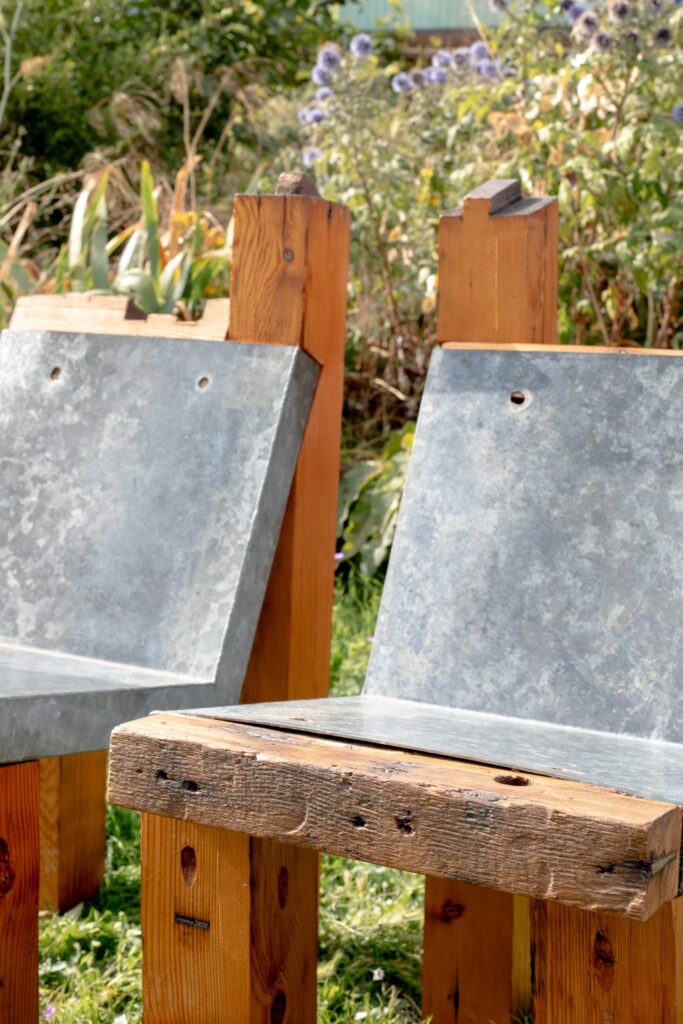
Local Materials and Artisanal Techniques for Responsible Architecture
In Jalpa de Méndez, Mexico, Studio CCA | Bernardo Quinzaños has completed the Community Development Centre, a project that integrates urban regeneration, environmental sustainability, and social inclusion. The most distinctive architectural feature is a series of eight monumental pigmented concrete panels, which not only define the project’s aesthetic but also play a crucial role in its environmental efficiency. Their semicircular arrangement creates an internal garden that functions as a passive climate control system, promoting natural ventilation and providing shaded areas that reduce the need for cooling systems, thereby minimizing energy consumption.
Another key aspect of the project’s sustainability is the choice of local materials. The pigmented cement used in construction mirrors the hues of cantera opal, a type of stone native to the region, reducing the environmental impact associated with long-distance material transportation. This approach not only limits CO₂ emissions but also fosters a harmonious integration with the urban landscape and the region’s historical heritage.
The construction process prioritized artisanal techniques combined with technological innovations, bridging tradition and modernity. By engaging local artisans in cement processing and finishing, the project minimized reliance on energy-intensive machinery, opting for a more sustainable and lower-impact production method. Additionally, the use of durable materials ensures longevity and reduced maintenance, further decreasing the ecological footprint over time.
Beyond enhancing access to high-quality public spaces, the Community Development Centre stands as a model of responsible architecture—where design, materials, and construction methods come together to create a place that respects the environment, celebrates local craftsmanship, and strengthens the sense of community.
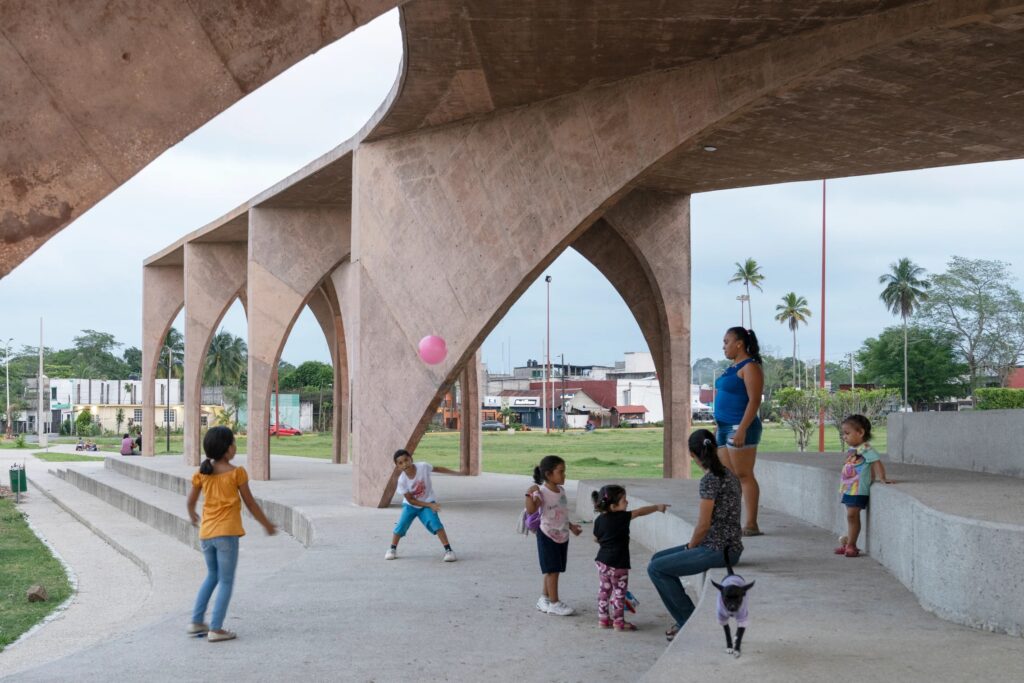
Efficient Installations: Prefabrication and Optimized Processes
In Birsa Munda Jail Park, Ranchi, India, the art installation Billion Impressions, designed by Namdev Talluru and Jaya Nila, transforms an underutilized green space into an urban landmark that fosters interaction and collective reflection.
Constructed from TATA Structura YST355, a high-strength, fully recyclable steel, the installation is designed for durability with minimal environmental impact. Prefabricating the steel sections at a plant in Kharagpur reduced material waste and improved production efficiency, ensuring a more precise and sustainable assembly. To further minimize site impact, the structure was designed in four modular segments, simplifying transport and lowering logistics emissions. This modular approach also optimized on-site assembly, cutting down construction time and reducing reliance on heavy machinery.
Billion Impressions also minimizes resource consumption by maintaining a reduced footprint, avoiding deep excavation, and respecting the surrounding landscape. Its design, featuring vertical elements that filter natural light, creates a dynamic interplay of shadows that enhances spatial perception without relying on artificial lighting. More than just a sculptural installation, it serves as a gathering place, encouraging the enjoyment of the park and enriching the urban fabric with an architecture that embodies collective identity and social inclusiveness.
